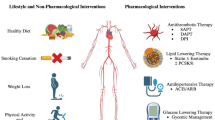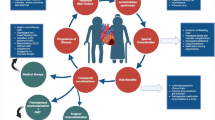Abstract
Background
Angiotensin receptor blocker (ARB), a commonly used antihypertensive drug, is reported to affect wound healing and flap survival in animal models. However, this has not been elucidated in a clinical series. This study aimed to investigate the impact that perioperative use of ARB has on outcomes after breast reconstruction.
Methods
Patients who underwent immediate breast reconstruction using a tissue expander or a deep inferior epigastric perforator (DIEP) flap were reviewed. The patients were categorized according to the types of antihypertensive medications as follows: the ARB group consisted of hypertensive patients treated with ARB alone or a combination of ARB and other drugs; the non-ARB group included those receiving drugs other than ARB; and the control group did not receive any medication. The effects of antihypertensive drugs on the development of complications were evaluated.
Results
The study analyzed 1390 cases including 999 cases of tissue-expander insertion and 391 cases of DIEP flap reconstruction. With regard to tissue-expander reconstruction, the rates of seroma, reoperation, reconstruction failure, and overall complications were significantly higher in the ARB group than in the other two groups. Compared with no medication, ARB use was an independent risk factor for these complications. With regard to DIEP flap reconstruction, the ARB group showed a significantly higher rate of fat necrosis and significantly greater odds for the development of overall perfusion-related complications and fat necrosis than the control group after adjustment for other variables.
Conclusions
Perioperative administration of ARB might be associated with adverse outcomes after breast reconstruction.
Similar content being viewed by others
References
Heneghan HM, Prichard RS, Lyons R, et al. Quality of life after immediate breast reconstruction and skin-sparing mastectomy: a comparison with patients undergoing breast conserving surgery. Eur J Surg Oncol. 2011;37:937–43.
Tran BNN, Fadayomi A, Lin SJ, et al. Cost analysis of postmastectomy reconstruction: a comparison of two-staged implant reconstruction using tissue expander and acellular dermal matrix with abdominal based perforator free flaps. J Surg Oncol. 2017;116:448–9.
Chang DW. Breast reconstruction with microvascular MS-TRAM and DIEP flaps. Arch Plast Surg. 2012;39:3–10.
Mills KT, Bundy JD, Kelly TN, et al. Global disparities of hypertension prevalence and control: a systematic analysis of population-based studies from 90 countries. Circulation. 2016;134:441–50.
James PA, Oparil S, Carter BL, et al. 2014 Evidence-based guideline for the management of high blood pressure in adults: report from the panel members appointed to the Eighth Joint National Committee (JNC 8). JAMA. 2014;311:507–20.
Pazoki-Toroudi H, Ajami M, Habibey R, Hajiaboli E, Firooz A. The effect of enalapril on skin flap viability is independent of angiotensin II AT1 receptors. Ann Plast Surg. 2009;62:699–702.
Criss CN, Gao Y, De Silva G, et al. The effects of losartan on abdominal wall fascial healing. Hernia. 2015;19:645–50.
Park JW, Mun GH. Comparative analysis of the effect of antihypertensive drugs on the survival of perforator flaps in a rat model. Microsurgery. 2018;38:310–17.
Gu Q, Burt VL, Dillon CF, Yoon S. Trends in antihypertensive medication use and blood pressure control among United States adults with hypertension: the National Health And Nutrition Examination Survey, 2001 to 2010. Circulation. 2012;126:2105–14.
Fleisher LA, Fleischmann KE, Auerbach AD, et al. 2014 ACC/AHA guideline on perioperative cardiovascular evaluation and management of patients undergoing noncardiac surgery: executive summary: a report of the American College of Cardiology/American Heart Association Task Force on practice guidelines. Developed in collaboration with the American College of Surgeons, American Society of Anesthesiologists, American Society of Echocardiography, American Society of Nuclear Cardiology, Heart Rhythm Society, Society for Cardiovascular Angiography and Interventions, Society of Cardiovascular Anesthesiologists, and Society of Vascular Medicine Endorsed by the Society of Hospital Medicine. J Nucl Cardiol. 2015;22:162–215.
Duceppe E, Parlow J, MacDonald P, et al. Canadian Cardiovascular Society guidelines on perioperative cardiac risk assessment and management for patients who undergo noncardiac surgery. Can J Cardiol. 2017;33:17–32.
Schmieder RE. Mechanisms for the clinical benefits of angiotensin II receptor blockers. Am J Hypertens. 2005;18:720–30.
Shibasaki Y, Matsubara H, Nozawa Y, et al. Angiotensin II type 2 receptor inhibits epidermal growth factor receptor transactivation by increasing association of SHP-1 tyrosine phosphatase. Hypertension. 2001;38:367–72.
Murasawa S, Mori Y, Nozawa Y, et al. Angiotensin II type 1 receptor-induced extracellular signal-regulated protein kinase activation is mediated by Ca2 +/calmodulin-dependent transactivation of epidermal growth factor receptor. Circ Res. 1998;82:1338–48.
Eguchi S, Numaguchi K, Iwasaki H, et al. Calcium-dependent epidermal growth factor receptor transactivation mediates the angiotensin II-induced mitogen-activated protein kinase activation in vascular smooth muscle cells. J Biol Chem. 1998;273:8890–6.
Rodgers K, Abiko M, Girgis W, St Amand K, Campeau J, diZerega G. Acceleration of dermal tissue repair by angiotensin II. Wound Repair Regen. 1997;5:175–83.
Rodgers K, Xiong S, Felix J, et al. Development of angiotensin (1–7) as an agent to accelerate dermal repair. Wound Repair Regen. 2001;9:238–47.
Takeda H, Katagata Y, Hozumi Y, Kondo S. Effects of angiotensin II receptor signaling during skin wound healing. Am J Pathol. 2004;165:1653–62.
Fernandez LA, Twickler J, Mead A. Neovascularization produced by angiotensin II. J Lab Clin Med. 1985;105:141–5.
Biondo-Simoes Mde L, Zazula AD, Gomes AB, Poncio C, Torres LF, Borsato KS. Influence of arterial hypertension treated with losartan on skin healing in rats. Acta Cir Bras. 2006;21:144–50.
Fischer JP, Nelson JA, Serletti JM, Wu LC. Perioperative risk factors associated with early tissue expander (TE) loss following immediate breast reconstruction (IBR): a review of 9305 patients from the 2005–2010 ACS-NSQIP datasets. J Plast Reconstr Aesthet Surg. 2013;66:1504–12.
Gill PS, Hunt JP, Guerra AB, et al. A 10-year retrospective review of 758 DIEP flaps for breast reconstruction. Plast Reconstr Surg. 2004;113:1153–60.
Santanelli F, Longo B, Sorotos M, Farcomeni A, Paolini G. Flap survival of skin-sparing mastectomy type IV: a retrospective cohort study of 75 consecutive cases. Ann Surg Oncol. 2013;20:981–9.
Lee KT, Eom Y, Jeon BJ, Mun GH. Vertical spacing of perforators in deep inferior epigastric perforator flap breast reconstruction can affect the outcomes. Plast Reconstr Surg. 2018;142:319–29.
Santanelli F, Longo B, Cagli B, Pugliese P, Sorotos M, Paolini G. Predictive and protective factors for partial necrosis in DIEP flap breast reconstruction: does nulliparity bias flap viability? Ann Plast Surg. 2015;74:47–51.
Author information
Authors and Affiliations
Corresponding author
Ethics declarations
DISCLOSURE
There are no conflict of interest.
Additional information
Publisher's Note
Springer Nature remains neutral with regard to jurisdictional claims in published maps and institutional affiliations.
Rights and permissions
About this article
Cite this article
Park, JW., Lee, KT., Jeon, BJ. et al. Effects of Antihypertensive Drugs on Outcomes of Breast Reconstruction. Ann Surg Oncol 26, 1712–1719 (2019). https://doi.org/10.1245/s10434-019-07293-z
Received:
Published:
Issue Date:
DOI: https://doi.org/10.1245/s10434-019-07293-z




